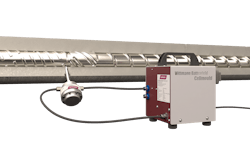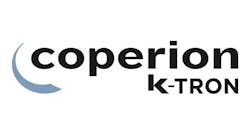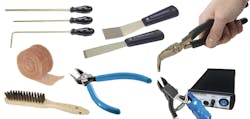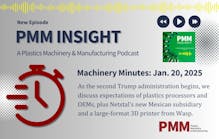By Karen Hanna
Makers of injection molding machines (IMMs) that use gas or other substances, such as water, to displace resin can help manufacturers save on materials.
Demand for resin-saving strategies is up, said Marco Moser, who works in application engineering for Wittmann Battenfeld GmbH.
“The rising resin prices and also the rising energy costs are especially accelerating these market trends. It therefore leads to a mold layout more oriented towards thin-wall design and also towards application of composite technologies,” he said.
In addition to cutting resin costs, manufacturers also are trying to lessen their impact on the environment.
At K Show, Wittmann is introducing updates of technologies that use nitrogen gas to reduce the amount of plastic manufacturers need to create parts.
They include Airmould 4.0, the newest version of an internal gas pressure system that injects nitrogen into an injection mold cavity, as well as an updated screw design for the company’s Cellmould technology, which mixes nitrogen gas into the melt.
Of special interest to makers of parts for the automotive, white goods and electronics industries is Cellmould, which uses physical foaming to reduce resin consumption.
“Using the same part geometry, usual weight reduction levels by use of foam injection molding versus compact molding are in the area of 5-10 percent,” Moser said.
At higher rates, the strength of foamed parts can suffer, he said.
“As nitrogen gas reduces the viscosity of the polymer melt, Cellmould enables the filling of thinner-wall parts. By now optimizing the part geometry to plastic-specific thin-wall design, you can reach a further weight reduction of [about]15-25 percent depending on the specific part geometry,” Moser said.
Like Wittmann, Engel offers foam injection molding technologies, in addition to other technologies that can limit resin use, including variothermal
temperature control, gasmelt and watermelt.
Engel’s variothermal injection molding allows manufacturers to overmold organic sheets composed of fibers in a thermoplastic matrix. The process results in parts with extremely smooth surfaces and very thin walls.
The company’s gasmelt and watermelt processing technologies are used for plastic parts that have hollow structures, such as grab handles in vehicle interiors or beverage crates, the company said.
In the process, plastic melt is injected into the cavity and then water or gas passes through the cavity to displace the molten plastic inside, creating a hollow structure.
The company also offers technologies that help manufacturers reduce scrap and optimize their use of recycled materials.
Demand for technologies that take a miserly approach to resin use is only going to grow, Moser predicted.
“... The market will continuously require more of such capabilities from the mold makers and will therefore also influence their investments in new technologies,” he said.
Contact:
Engel Machinery Inc., York, Pa., 717-764-6818, www.engelglobal.com
Wittmann USA Inc., Torrington, Conn., 860-496-9603, www.wittmann-group.com
Karen Hanna, senior staff reporter
Karen Hanna | Senior Staff Reporter
Senior Staff Reporter Karen Hanna covers injection molding, molds and tooling, processors, workforce and other topics, and writes features including In Other Words and Problem Solved for Plastics Machinery & Manufacturing, Plastics Recycling and The Journal of Blow Molding. She has more than 15 years of experience in daily and magazine journalism.






